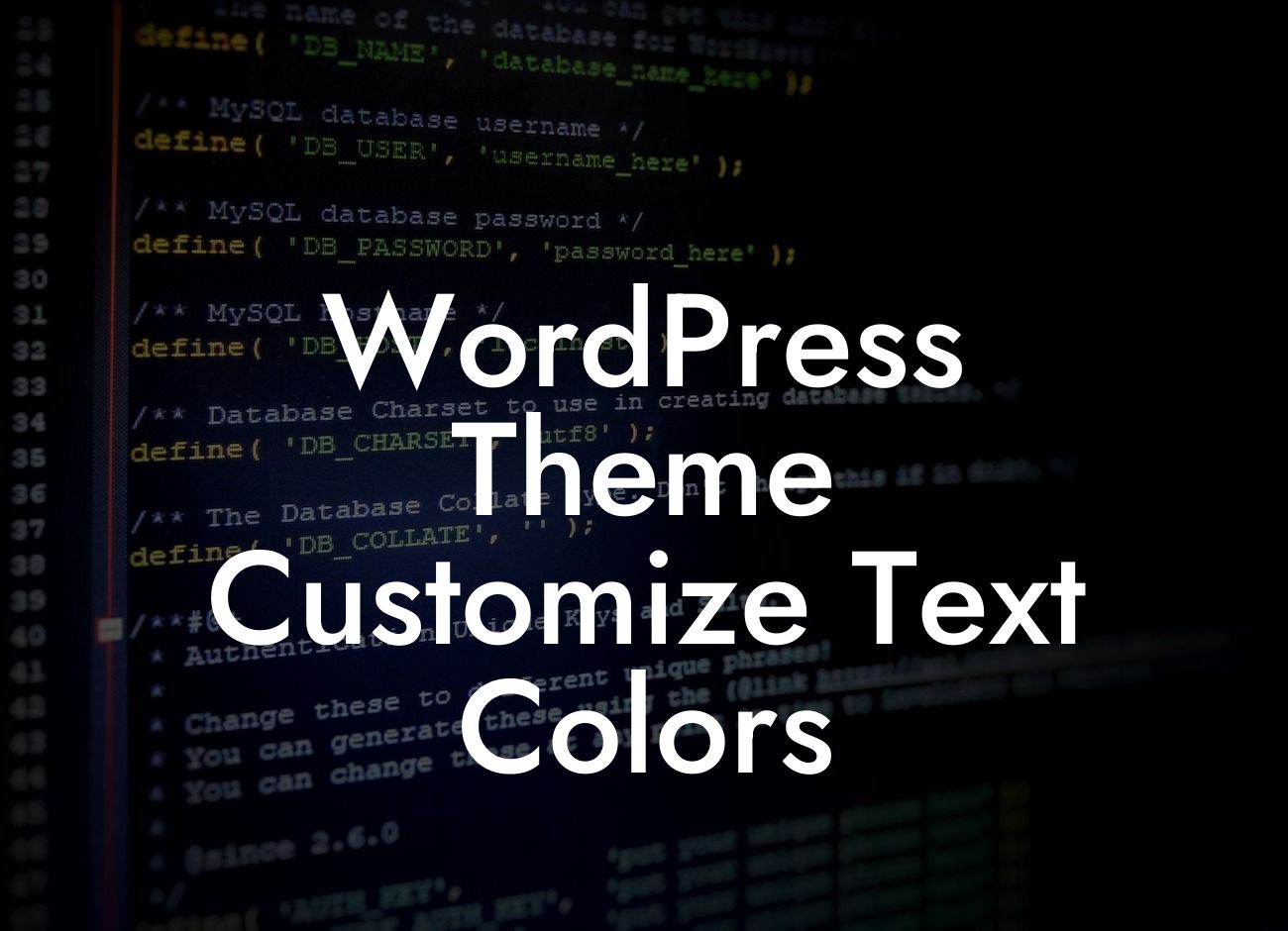Are you tired of the default text colors in your WordPress theme? Want to add a touch of personalization to your website? Look no further! In this article, we will show you how to easily customize text colors in your WordPress theme. With our step-by-step guide, you'll be able to create a visually stunning website that stands out from the crowd. So, let's dive in and get started!
1. Understanding CSS:
Before we begin, it's important to understand the basics of CSS (Cascading Style Sheets). CSS is used to control the appearance of web elements, including text colors. Familiarize yourself with CSS syntax and selectors to make the most out of the customization process.
2. Locating the CSS file:
To customize the text colors, you'll need to locate the CSS file of your WordPress theme. This file contains the styles that control the appearance of your website. You can access it from the Appearance > Editor section in your WordPress dashboard or by connecting to your website's file server using FTP.
Looking For a Custom QuickBook Integration?
3. Identifying the text elements:
Once you've opened the CSS file, look for the selectors that control the text elements you want to customize. For example, if you want to change the color of your headings, search for the selectors like h1, h2, h3, etc. Understanding the structure and class names will help you make targeted changes.
4. Modifying the text colors:
Now that you've identified the text elements, it's time to customize their colors. Within the relevant selectors, add the CSS property "color" followed by the desired color value. You can use named colors, hexadecimal, RGB, or HSL values to achieve the desired effect. Save the changes and preview your website to see the updated text colors.
Wordpress Theme Customize Text Colors Example:
Let's say you want to change the color of your headings to a vibrant blue. Locate the CSS file, find the selectors for headings (e.g., h1, h2), and add the following CSS rule: color: #00aaff;. Save the changes, refresh your website, and voila! Your headings now have a stunning blue color that perfectly complements your brand.
Congratulations! You have successfully customized the text colors in your WordPress theme. By personalizing these elements, you've created a unique and visually appealing website that impresses your visitors. If you found this guide helpful, make sure to share it with others who might benefit from it. Explore more comprehensive guides on DamnWoo's website to enhance your WordPress skills. And don't forget to try one of our awesome plugins to take your online presence to the next level. Happy customizing!













